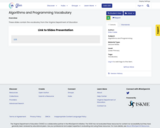
These slides contain the vocabulary from the Virginia Department of Education
- Subject:
- Algorithms and Programming
- Material Type:
- Lecture Notes
- Author:
- Erika Coble
- Date Added:
- 06/26/2022

These slides contain the vocabulary from the Virginia Department of Education
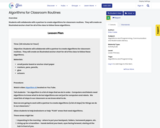
Students will collaborate with a partner to create algorithms for classroom routines. They will create an illustrated anchor chart for all of the class to follow these algorithms.

This is a unit plan to teach computational thinking in the primary grades.

This game is played the same way you would play hopscotch.
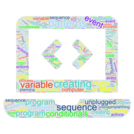
This is a list of basic vocabulary with definitions and/or examples that will be used in elementary classrooms K-5 when teaching the concepts of algorithms and programming.

Students will be able to retell a fairy tale by coding a path using story event pictures. Students will be able to translate an algorithm into a program.

In this lesson, students will code a robot to move on a grid toward certain objectives.
![Grid Challenges [Unplugged]](https://img.oercommons.org/160x134/microsite-vadoe-prod/media/courseware/lesson/image/Screen_Shot_2022-07-19_at_5.09.48_PM_dOPPtpJ.png)
Students will practice writing out code in a step-by-step manner and get familiar with debugging.

Set students up for programming success by creating a BeeBot anchor chart!These editable instructions will help students identify their role as planner or driver and set clear expectations of how Bee-Bot is used in computer programming. Tips:Introduce Bee-Bot whole classMake sure students understand the importance of the clear (x) button to erase the previous codealways press clear first to signal a new code (like how a capital letter signals the start of a new sentence) Plan the program in developmentally appropriate steps (some students program one step at a time, while others can program to the end goal)Turn the Bee-Bot off and use it as a game piece to write successful algorithmsHave students write their plan, or algorithm, on a whiteboard instead of using the cardsThe Bee-Bot emulator is perfect for guided practice!

Students will be introduced to the term algorithm while reading the story of Humpty Dumpty. Students will develop an algorithm or step by step sequence of instructions for putting Humpty Dumpty back together again.
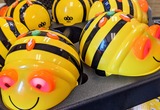
Students will work in pairs/teams to complete jobs in order to program a Bee-Bot through a grid.

Students will love programming their "robot teacher" to maneuver around the classroom in this introductory coding lesson. Basic computer science concepts are defined and applied as students work together to plan, create, and test algorithms. Students will recognize that programmers are the brains behind machines and technologies.

Students use an iterative process to create an unplugged code to connect needs of plants and animals.

Students will order a set of three numbers from least to greatest and greatest to least. Students will then code their Bee-Bot on the matching numerals from least to greatest or greatest to least.

Ever wonder how a pumpkin grows? Let’s learn about growing pumpkins from seed to fruit! Pumpkins are interesting and fun…let’s learn all about the pumpkin life cycle together and even get our hands dirty as we plant our own seeds and watch the magic happen.

Students get a hands-on approach to carving a pumpkin while learning about the life cycle. Students will sort pictures of a pumpkin life cycle, create a paper plate pumpkin, and manipulate pumpkin seeds for counting and sorting.

Let’s bake a fall treat for your littles to eat! This activity supports step-by-step instructions using sequential graphic organizers and will use their five senses to find, take in, and react to or respond to different information.
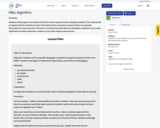
Students will program the teacher (robot) to make a peanut butter and jelly sandwich. This will provide an opportunity for students to learn that robots (and computers) need to follow very specific instructions to work correctly. This lesson could then be extended into letting the students try to create algorithms for daily classroom routines or any other step by step process.
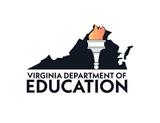
Lesson to support the Computer Science Standards of Learning

Through the use of a choose-your-own-adventure style read aloud, the teacher will guide students to create an algorithm for the story they are creating within the book. This lesson also serves as a basic introduction into the process behind computer programs, including games, when the user makes a decision.